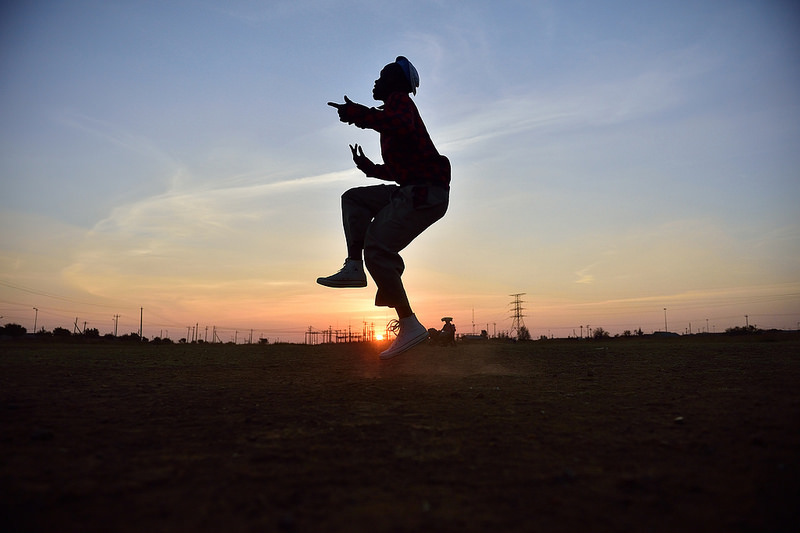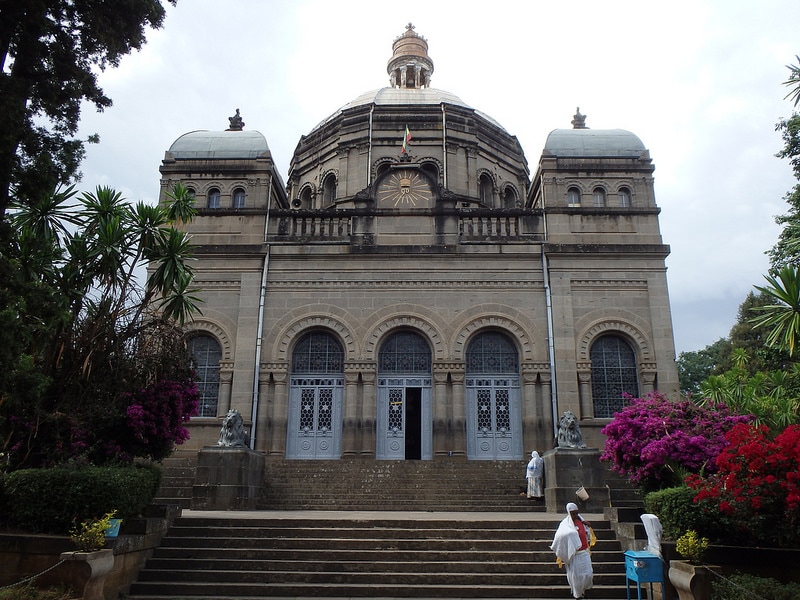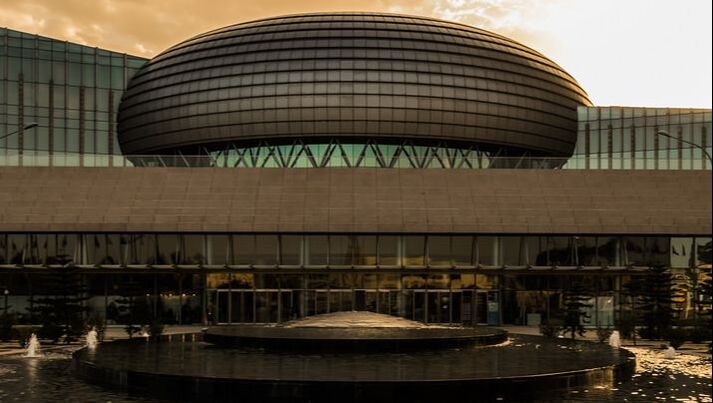Factors for the rise of nationalism in Africa.
NATIONALISM IN GHANA
The British annexed Gold Coast in 1874 after quelling a stiff resistance by the Asante. In response to the British imperialism, the Fonte Confederation was initiated in 1868, marking the birth of African Nationalism in Ghana. In 1897, the Aborigines Rights Protection Society was formed to guard against the alienation of African land.
In the 1930s, African elites like J.B. Danquah launched the Gold Coast Youth Conference in order to awaken the youth to the economic and social needs of the country.Their efforts bore fruits because in 1946, governor Burns embarked on constitutional reforms leading to increased African representation in the LegCo. (Of the 18 slots given to Africans in the LegCo, 13 were to drawn from among the chiefs while 5 were to be popularly elected). The elites formed the United Gold Coast Convention (UGCC) and invited Kwame Nkrumah, a graduate of the University of Pennsylvania in Philadelphia, to come and lead it since most of them were professionals lacking time for political commitment. Nkrumah appeared to have more political experience having participated in the 1945 Manchester conference. Factors for the growth of nationalism in Ghana.
The peak of nationalism in Ghana.
On 28th February 1948, the ex-soldiers led the Accra riots, protesting to Governor Gerald Creasy the failed fulfillment of the government pledges while in service during the World War II. Two rioters were killed. The shooting incident sparked of chaos in the town leading to another 29 Africans being killed. Nkrumah was arrested together with his colleagues popularly known as the ‘Big Six’. (Nkrumah, Danquah, William Ofori, Addo, Adjei and Obetsebi Lamptey).
This arrest popularized Nkrumah among the Africans. The 1948 Alken Watson commission blamed the social-economic oppression for the riots. The governor ordered for constitutional reforms led by J.H Coussey. On 12th June 1949, Nkrumah broke ranks with the conservative UGCC senior members and formed the Convention People’s Party (CPP). His party gained support mainly from among the primary school leavers, store-keepers, artisans, peasants and cocoa farmers. Nkrumah advocated positive action through legitimate political action, newspaper and political campaigns and constitutional application of boycotts, strikes and non-cooperation based on the policy of absolute non-violence on the basis of Mahatma Gandhi teachings. He started a newspaper, The Accra Evening News to expound CPP views. He was arrested, but secured landslide victory in the February 1951 elections while in jail. He was released to become the leader of government business in the new cabinet. CPP also won in the 1954 elections in which a new party, the National Liberation Movement (NLM) had emerged to compete CPP. NLM membership mainly from the Ashanti, were uncomfortable with Nkrumah because;
Achievements of CPP under Kwame Nkrumah.
How Kwame Nkrumah contributed to the liberation struggle in Africa.
NATIONALISM IN MOZAMBIQUE.
Mozambique was among the last countries in Africa to attain independence from the Portuguese. Even before the Berlin conference, Mozambique and Angola were considered Portuguese colonies owing to the later’s interests in the region dating back to the pioneer years.
Reasons for slow process in decolonization process of Mozambique.
Factors for the growth of nationalism in Mozambique.
The peak of nationalism in Mozambique.
In early 1960, the Makonde people of Cabo Delgado province formed the Mozambican-Makonde Union (MANU).In June 1960 MANU organized a peaceful protest but in which over 600 Africans perished in police firepower. The government outlawed all African organizations with membership of over thirty people. African political activities went underground. Mwalimu Julius Nyerere inviting some of the liberation groups to relocate to Tanzania in 1962. The political groups united to form the Liberation Front of Mozambique (FRELIMO) with Eduardo Mondlane Chirambo, formerly a lecturer at Syracuse University in USA, as its first president.
From 1962 to 1964, FRELIMO undertook guerilla training in Bagamoyo and at the Mozambique institute in Dar es Salam in preparation for war. From September 1964, they began a full-scale war against the Portuguese along river Ruvuma and extending their attacks on the Cabo Delgado province. By 1967, the Portuguese forces numbered 65,000 soldiers. Mondlane Eduardo was assassinated in 1969. Samora Machel was elected to become the FRELIMO army commander in 1970. The coup d’etat in Lisbon in 1974 was a blessing to FRELIMO movement since soldiers who did not favour colonial wars by Marcello Caetano carried it out. The new military junta finally signed an agreement with FRELIMO the enabled the setting up of a transitional government in September 1974. He handed over power to the Africans in 1975 with Samora Machel becoming the first president. Machel died in 1986 in a plane crash blamed on the South African Apartheid regime, unhappy with his support for African nationalists in South Africa.Samora Machel’s widow, Graca Machel, married South African President Nelson Mandela in 1994. Reasons why the struggle for independence in Mozambique was violent.
Factors that facilitated the defeat of the Portuguese colonial armies by FRELIMO in Mozambique.
Problems that faced FRELIMO in the war against Portuguese.
SOUTH AFRICA.
The complex nature of nationalism in South Africa was due to the following reasons;
Afrikaner nationalism
Afrikaners were the Dutch speaking – speaking settlers. The Afrikaner nationalism emerged in the 19th century reaching its peak in 1948 when their Nationalist Party under Daniel F. Malan won the elections introducing the Apartheid policy.
Reasons for the birth of Afrikaner Nationalism in South Africa.
African Nationalism
Its roots are traced in the 17th century with the first Boer occupation of South Africa. Africans resisted strongly against the interference with their political freedom and economic resources. This was in form of the Xhosa and Ndebele wars of the 17th c and the Zulu wars of 1870s led by Cetewayo.
In 1906, a Zulu chief named Bambata staged another African uprising this time against the British who had annexed the Zululand in 1887. From 1910, when the union of South Africa was created and the Afrikaners gained political control of South Africa, Africans lost all the political privileges they previously enjoyed like ability to vote and contest parliamentary seats. Africans founded independent churches and formed organizations like the Orange River Organization. Factors for the growth of African nationalism in South Africa.
Formation of the African National Congress, 1912
Opposition to the Natives Land Act led to the formation of the South African Native National Congress (renamed the African National Congress [ANC] in 1923) by South Africa's educated African elite in a meeting at Bloemfontein on January 8, 1912.
As a result of the League’s activities, violent confrontations between ANC and the government broke out in 1952 in Witwatersrand, Kimberley and Eastern Cape. The Congress of the People and the Freedom Charter
In 1952, Albert Sisulu became the president of the organization and presided over the ‘congress of the people’ which adopted the ‘Freedom Charter’ on June 25 and June 26 1955.
The congress drew 3,000 delegates from;
After adoption of the charter, in 1956 the police arrested 156 leaders, including Luthuli, Mandela, Tambo, Sisulu, and others, and put them on trial for treason in a court case that dragged on for five years. The Pan-Africanist Congress and Sharpeville.
The Africanists, led by Robert Sobukwe, criticized the ANC for allowing itself to be dominated by 'liberal-left-multi-racialists”. They formed their own organization, the Pan-Africanist Congress (PAC) in 1959. In March 1960, the PAC began a national campaign against the pass laws. One such demonstration outside the police station at Sharpeville, the police fired on the demonstrators, killing at least 76 of them and wounding 186. Approximately 18,000 demonstrators were arrested, including the leaders of the ANC and the PAC, and both organizations outlawed.
The ANC and the PAC Turn to Violence.
Prohibited from operating, both the ANC and the PAC established underground organizations in 1961. The militant wing of the ANC, Umkhonto we Sizwe (Spear of the Nation), targeted strategic places such as police stations and power plants. Poqo (Blacks Only), the militant wing of the PAC, engaged in a campaign of terror, targeting in particular African chiefs and headmen believed to be collaborators with the government and killing them.
17 Umkhonto leaders, including Walter Sisulu were arrested at Rivonia farm house. Along with Nelson Mandela, they were tried for treason. Albert Luthuli was confined by government to his rural home in Zululand until his death in 1967. Tambo escaped from South Africa and became president of the ANC in exile. Robert Sobukwe of Poqo was jailed on Robben Island until 1969 and then placed under house arrest in Kimberley until his death in 1978. The Johannesburg railway station bomber, John Harris, was hanged. The Black conscious movement - Soweto, 1976.
The peak of African nationalism in South Africa.
In 1983, P.W. Botha's government proposed establishment of separate houses of parliament for each racial group. In place of the single House of Parliament were;
Black trade unions meanwhile resorted to economic and political protests. For example, The National Union of Mineworkers (NUM), formed in 1983 by Cyril Ramaphosa, successfully brought work in mines to a stop in a dispute over wage increases. By end of 1985, 879, fatalities and 8000 arrests were linked to political unrest. ANC and UDF were banned. Meanwhile, Supporters of the Zulu-dominated Inkatha Freedom Party (IFP) and the banned ANC clashed in an upsurge of "black-on-black" violence that would cause as many as 10,000 deaths by 1994. President Botha resigned under pressure on August 14, 1989, the Electoral College named de Klerk to succeed him in a five-year term as president. In October 1989, De Klerk released Walter Sisulu and others except Mandela. He announced on February 2, 1990, the impending release of Mandela and unbanning of the ANC, the PAC, and the SACP, and the removal of restrictions on the UDF and other legal political organizations. Mandela was released on February 11, 1990, at age 71 after 27 years in prison. ANC officials elected Mandela deputy president in March 1990, under ailing president, Oliver Tambo. Between June 5, 1991 and June 17, 1991, the government repealed the pillars of apartheid, the Land Act of 1913, the Group Areas Act of 1950 and Population Registration Act of 1950, (the most infamous, which had authorized the registration by race of newborn babies and immigrants). Most international sanctions were lifted soon after the Population Registration Act, Group Areas Act, and Land Acts were repealed. In mid-1992 due to escalating violence, by IFP supporters on ANC sympathizers in Boipatong delayed the process of negotiation for elections. On March 5, 1993, Chris Hani, the popular general secretary of the South African Communist Party (SACP), was murdered threatening the process again. On April 12, 1994, a team headed by former British foreign secretary Lord Carrington and former United States secretary of state Henry Kissinger attempted in vain to break the logjam that was keeping the IFP out of the elections. However, on April 19, Buthelezi--under intense pressure from trusted local and international figures—including a Kenyan diplomat professor Washington Okumu, relented and agreed to allow the IFP to be placed on the ballot. When the elections finally took place on schedule, beginning on April 26, 1994, ANC won 62.6 percent of the vote; the NP, 20.4 percent; and the IFP, 10.5 percent. Mandela was unanimously elected president by the National Assembly on May 9, 1994, in Cape Town. He was inaugurated on May 10 at ceremonies in Pretoria. Key South African Nationalists:
|
Archives
April 2024
Categories
All
|




 RSS Feed
RSS Feed